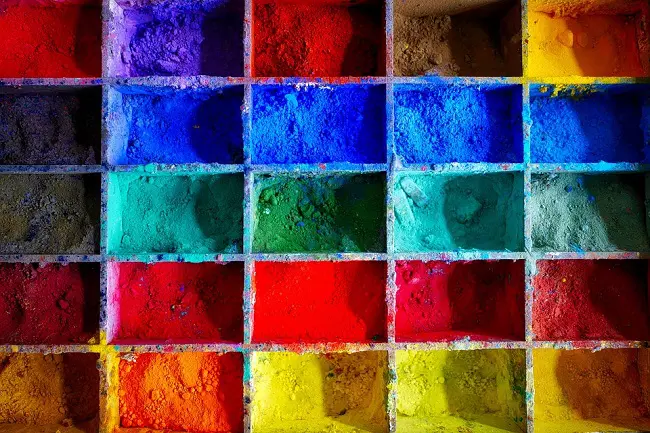What did a medieval palette look like?
When it comes to painting, we can decide what medium and exactly what colors are to be used, and above all, we can choose from magnificent, richly pigmented paints. This was not always the case though...
Mineral pigments were popular in the Middle Ages (Photo: pixabay.com)
The medieval palette obviously had far less colors than what we have today, and some of the pigments were so rare and expensive that artists only used them for certain figures and motifs. The most widely used pigment carrier was a kind of egg and water mixture, which many painters used in the 13th century, and even before that date.
The use of egg tempera paint meant that the artists had to paint several thin layers on top of each other to prevent the paint from cracking.
Gum arabic, though widely used by the ancient Egyptians as a binder for paints, was only rediscovered by the European population by the 15th century. Even then, the gum arabic was mostly used as medicine.
Most of the pigments used by medieval painters were made of minerals found in the nature, especially as part of clay and sand.
Some of the frequently used pigments were red ochre, yellow ochre and umber, which are all reddish or brownish earth pigments. In the case of umber, heating makes the color more intense, thus it becomes what we call burnt umber. These warm red and brown pigments were quite frequently shaped into chalks, and were popular even in the 16-18th centuries.
Some colors, of course, were much harder to produce. One example is ultramarine – which was probably the most valued blue in the Middle Ages. The pigment was mostly used to paint the most important, holy or noble figures and motifs due to its costly price and rarity – and because the color blue was associated with purity by that time. Ultramarine was widely used to paint the clothes of Virgin Mary. The pigment was made out of the semi-precious stone lapis lazuli, which was mined in the Afghan Badakhshan province.
Ultramarine was not the only blue artists used – azurite provided a somewhat softer, deeper kind of blue. One notable disadvantage of the copper mineral was that it was somewhat unstable in air. The use of the azurite dates back to the ancient Egyptians, who used the pigment to make wall paintings, and to achieve a blue color for some of the clothes they used. While ultramarine was highly priced and supplied mainly from Afghanistan, there were some noticeable azurite deposits in some parts of France and Germany. Azurite could also be used to gain a greenish color when mixed with egg yolk.
Celadonite and glauconite were used to make green earth – also known as terre verte –, a pigment available since antiquity and widely used in the Middle Ages to underpaint flesh tones. The pigment is sometimes called Verona green, from the North Italian city of Verona, where high quality deposits could be found at the Monte Baldo. Verdigris and malachite were other popular greens used by medieval painters.
Orpiment, also known as king's yellow is said to have been used by the ancient Egyptians as part of some cosmetics. In China however, it was used as a repellent against insects due to its toxic properties. The pigment could provide a wide range of yellows, from canary or lemon yellow to golden, sometimes even brownish yellow. Sadly, orpiment shows a severe loss of its color in the absence of light.
Some plant-based pigments were also used in the Middle Ages, such as indigo, woad and saffron. Vine black was a charcoal made from grapevine twigs.
A. D.
April 2018

